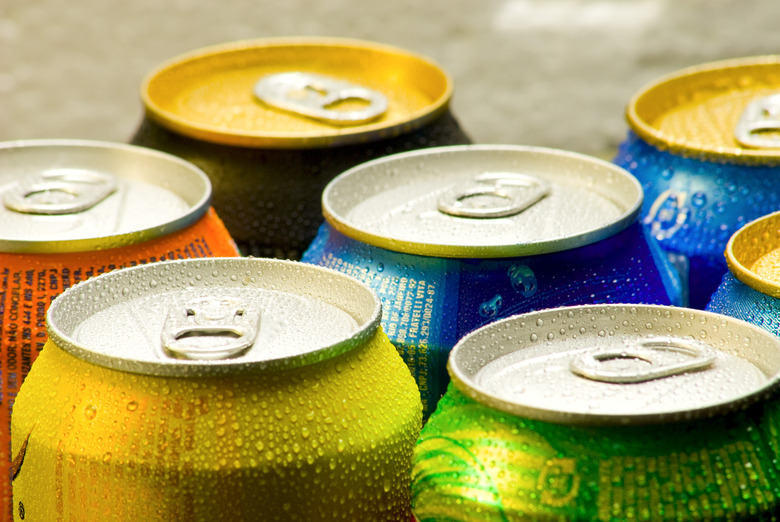Easy Home Experiments Using Gas Laws
The gas laws are easy to demonstrate with everyday household items. These related scientific principles describe how the volume, pressure and temperature of a gas change under various conditions, and represent a cornerstone of chemistry and physics. A gas law experiment shows what happens to one property, such as the volume, when you change another, such as temperature, while keeping the remaining one the same. The experiments described here are safe and inexpensive and use no harmful chemicals, only air and water vapor. The same principles work for any ordinary gas.
The Can Crusher
The Can Crusher
The can crusher experiment demonstrates Charles's Law, the basic principle that gases expand when heated and contract when cooled. You will need a small soda can; fill it with about half an ounce of water. Boil the can in a pan of water for about a minute, and you will notice vapor steaming from the opening of the soda can. Using tongs, grab the can and place it upside down in a bowl of cold water. The can will crush immediately. The water vapor exits the can immediately, and cold water condenses the vapor, leaving the can at very low pressure inside. It happens so quickly that the normal air pressure outside the can crushes the exterior of the can.
The Balloon in the Bottle
The Balloon in the Bottle
Find an empty glass bottle, such as a soda bottle, and fill it with about an ounce of water. In a pan of water, heat the bottle until the water inside reaches a boil. Stretch balloon over the mouth of the bottle. As the bottle cools, the gas will suck the balloon into the bottle and it will begin to inflate inside the bottle. What is happening is that the balloon trapped the water vapor in the bottle and as it cools the outside air pressure replaces the water vapor that is now condensing and emptying the inside of the bottle. Gas expands as it heats, and shrinks as it cools, making the bottle "empty" compared to the exterior air pressure. The balloon expands inside the bottle to allow the exterior air pressure inward. This experiment provides another example of Charles's Law.
The Air Compression Experiment
The Air Compression Experiment
This experiment demonstrates the power of compressed air. Empty a soda bottle and insert a balloon. Try to inflate the balloon inside the bottle. It is impossible because of the air sitting inside the bottle. As the balloon inflates, it squeezes the air in the bottle. The air compresses but also pushes back, like a spring. Your lungs cannot provide enough force to overcome the air pressure in the bottle. This experiment illustrates Boyle's Law, which shows that you can compress a gas, though it's not easy.
Cite This Article
MLA
Beckett, Graham. "Easy Home Experiments Using Gas Laws" sciencing.com, https://www.sciencing.com/easy-experiments-using-gas-laws-5506609/. 13 March 2018.
APA
Beckett, Graham. (2018, March 13). Easy Home Experiments Using Gas Laws. sciencing.com. Retrieved from https://www.sciencing.com/easy-experiments-using-gas-laws-5506609/
Chicago
Beckett, Graham. Easy Home Experiments Using Gas Laws last modified March 24, 2022. https://www.sciencing.com/easy-experiments-using-gas-laws-5506609/
